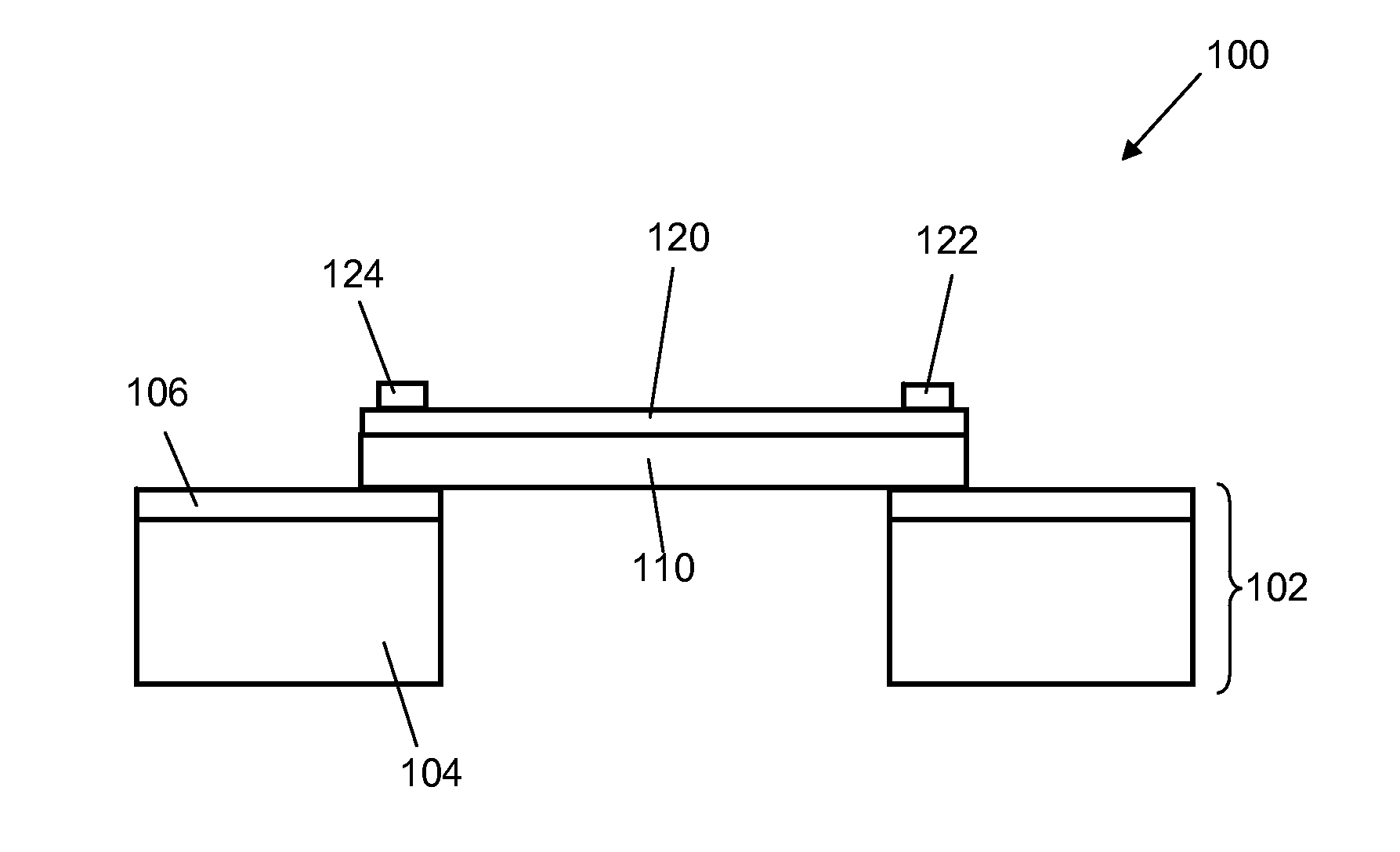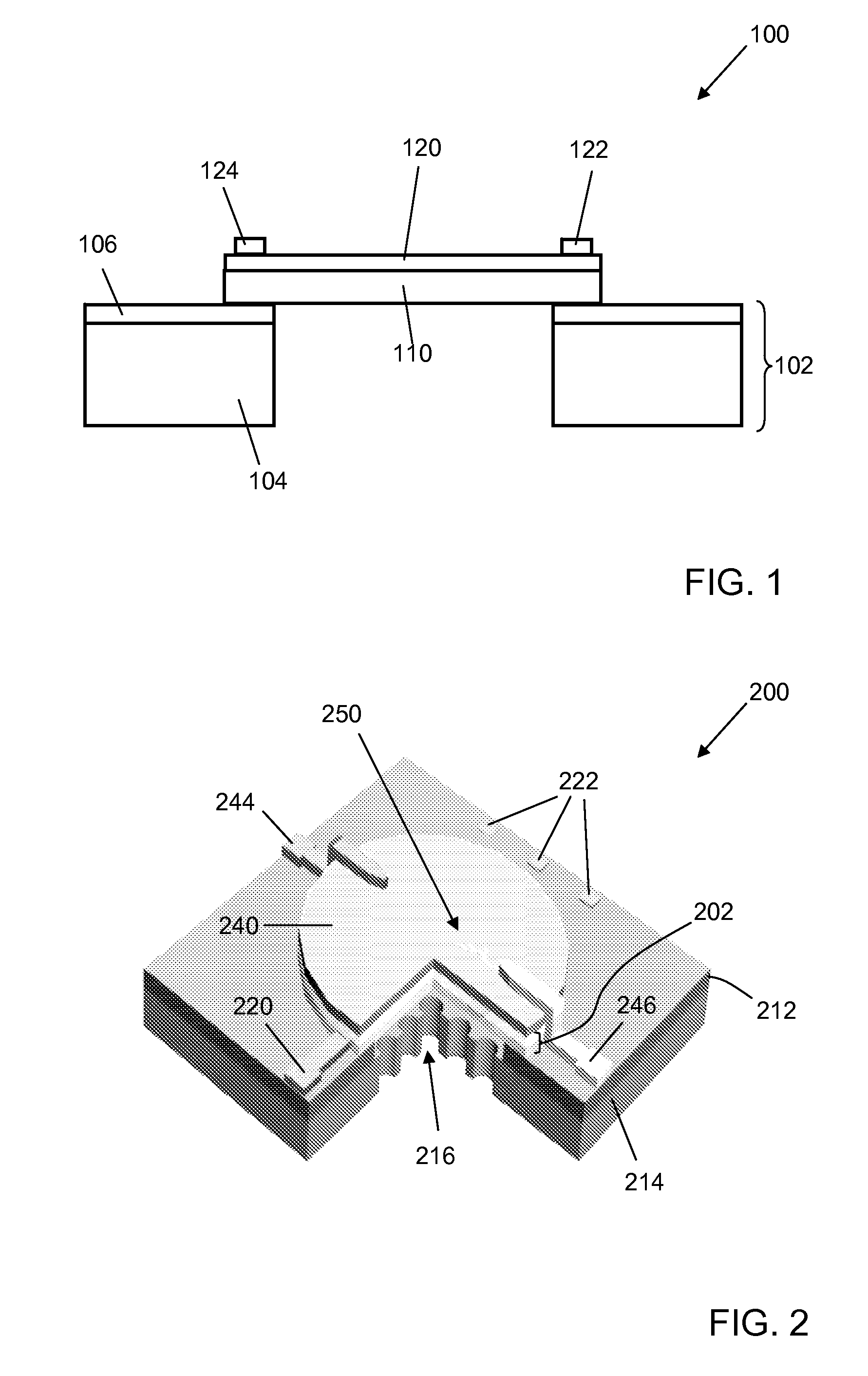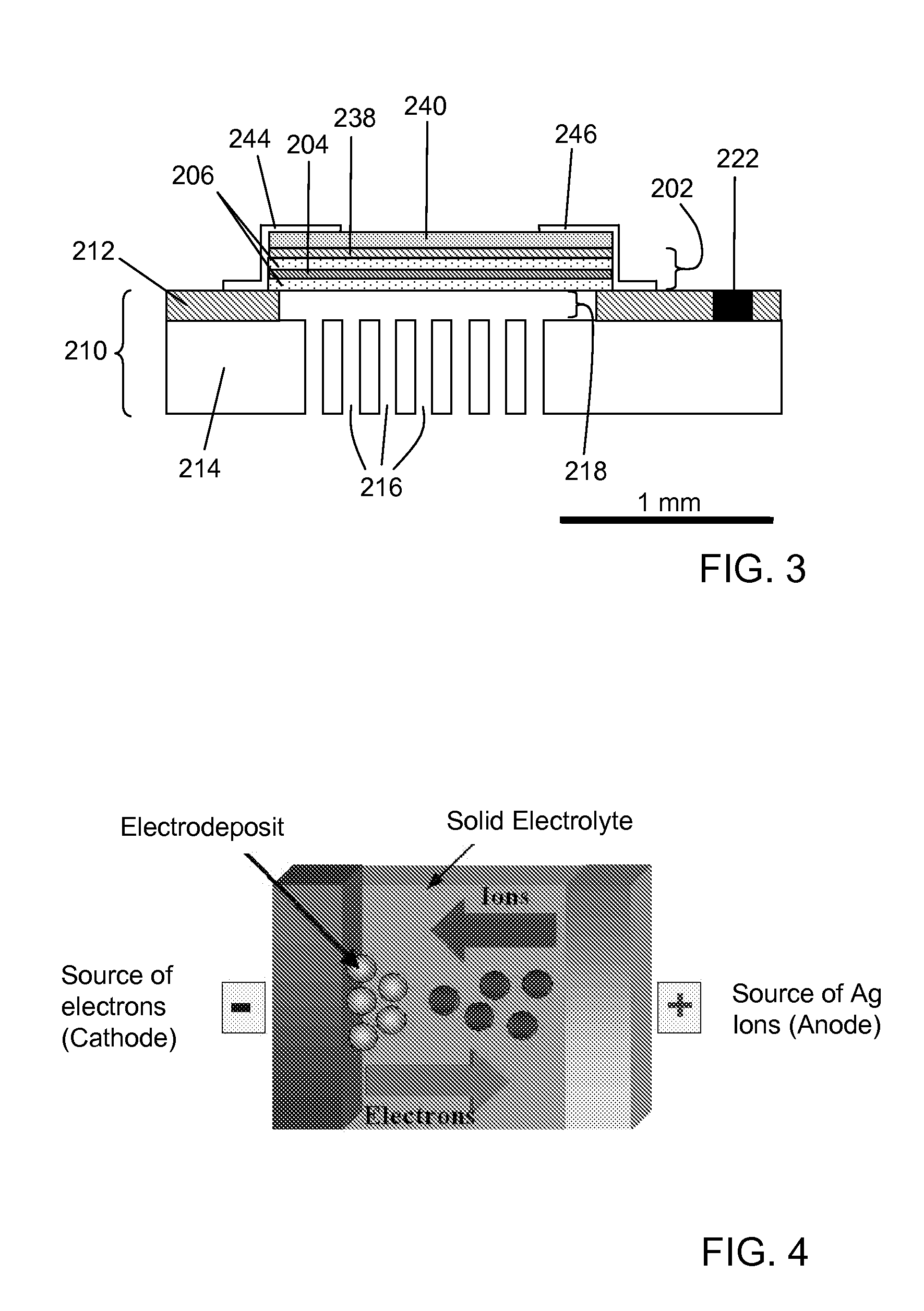Microphone devices and methods for tuning microphone devices
a microphone and microphone technology, applied in the direction of electrical transducers, piezoelectric/electrostrictive transducers, transducer types, etc., can solve the problems of significant variation in mass and stiffness, difficult to manufacture diaphragms with well-defined responses, and differences between the responses of diaphragms and the microphone elements and devices in which they are used, so as to reduce the concentration of metal
- Summary
- Abstract
- Description
- Claims
- Application Information
AI Technical Summary
Benefits of technology
Problems solved by technology
Method used
Image
Examples
examples
[0055]The invention can be further described by the following non-limiting Examples.
[0056]A microphone element according to the present invention was fabricated according to a procedure analogous to that described above with referenced to FIG. 6. In this microphone element, the suspended diaphragm has two layers of parylene films, a thin parylene layer underneath the top electrode, and a thicker parylene layer on top of the electrode. C-type parylene is used for the diaphragm material because of its excellent electrical / mechanical properties. The first parylene layer (3000-Å thick) is coated on a 1-μm thick sacrificial oxide layer on a silicon wafer to provide electrical isolation between the top and bottom electrodes. The parylene diaphragm is patterned by etching in an oxygen plasma for 1.5 min at an etch rate of 2000 Å / min under 15 sccm oxygen, 100 W RF power, and 500 V bias. A 3000 Å thick top electrode (Cr / Au) is then deposited and patterned on this first parylene layer. The se...
PUM
 Login to View More
Login to View More Abstract
Description
Claims
Application Information
 Login to View More
Login to View More - R&D
- Intellectual Property
- Life Sciences
- Materials
- Tech Scout
- Unparalleled Data Quality
- Higher Quality Content
- 60% Fewer Hallucinations
Browse by: Latest US Patents, China's latest patents, Technical Efficacy Thesaurus, Application Domain, Technology Topic, Popular Technical Reports.
© 2025 PatSnap. All rights reserved.Legal|Privacy policy|Modern Slavery Act Transparency Statement|Sitemap|About US| Contact US: help@patsnap.com



